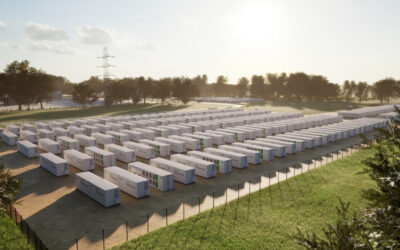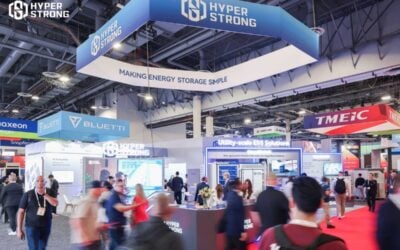
The recent flurry of energy storage project announcements from Massachusetts have been driven in part by a “common sense” approach to tackling the dirtiest impacts of fossil fuel generation, Energy-Storage.news has heard from industry figures.
Massachusetts was identified by research firm Wood Mackenzie Power & Renewables as one of the leading US states to have “laid the groundwork for supportive storage policies” in recent years, along with New York. Both states, Wood Mackenzie expect, will witness project developments that will contribute to ”substantial growth” US-wide in the early 2020s. The company predicts an annual US market of 4.8GW deployments by 2024 even under a base scenario with a storage-specific ITC (investment tax credit) – although an ITC could help boost that to 5.1GW annually.
Energy-Storage.news has reported on a number of projects already executed or in the pipeline, with NEC (under its Massachusetts-headquartered Energy Solutions division) the first to complete a grid-scale project in 2016 and more recently touting the award of six ‘unsubsidised’ projects for municipal utilities in New England in August this year. The likes of ENGIE Energy Storage (formerly known as Green Charge) and commercial storage specialist Stem Inc have also spied big (solar-plus-storage) opportunity in Massachusetts in more recent months.
Along with the solar-targeting Solar Massachusetts Renewable Target (SMART) programme, a peak-reducing residential virtual power plant (VPP) rolled out by National Grid and the promise of wider participation in regional New England ISO programmes, key among those policies has been the Clean Peak Standard. Lauded by both industry and experts on its inception, in short the policy seeks to reduce the amount of fossil fuel generation relied on to meet the most extreme demands of consumer, commercial and public energy use during peak times.
Enjoy 12 months of exclusive analysis
- Regular insight and analysis of the industry’s biggest developments
- In-depth interviews with the industry’s leading figures
- Annual digital subscription to the PV Tech Power journal
- Discounts on Solar Media’s portfolio of events, in-person and virtual
Some commented when it first emerged that bar has been set fairly low with the initial actual ‘standard’ set by the legislation. Wood Mackenzie also identified it in its Q3 2019 US Energy Storage Monitor as currently undergoing a draft language stage, but did point out that it appears to include “favourable provisions for storage”.
“I would say [that with] the Clean Peak, what people are focused on is typically the cheapest and the dirtiest part of your power generation. You fire up units that you don’t fire up very often. Just in firing those up you’re going through a cycle that is reasonably dirty, because you’re not at a steady state of operations and you’re often turning them off quickly,” John Zahurancik, COO at Fluence, said, referring to the common use of combined-cycle gas turbine ‘peaker plants’.
“People are focused on that because they’ve noticed that, hey, it’s the most expensive part of what we do [on the grid]. It’s expensive environmentally and it’s expensive cost-wise.”
The Clean Peak Standard, NEC’s Roger Lin said, “rewards the shifting of clean energy to a peak time of day, for when it’s needed the most.”
“Whereas today, clean energy is produced when it can be produced. Meaning if it’s sunny you get solar energy, if it’s windy you get wind energy, if there’s enough water you can hydropower, and so on.
“Shifting clean energy to a peak of the day, I think is a very targeted and smart policy way to encourage things like energy storage to shift that clean energy created to the peak time of day,” Lin said.

Domino effect of toppling the peak
Fluence COO John Zahurancik noted that “peakiness” also means “a kind of poor asset utilisation” over the whole period of its lifetime. Energy storage is just one of the technologies and options that can cut the peak, especially when paired with wind and solar, along with demand response and tariff programmes that incentivise any kind of shifting of energy use. As Zahurancik notes, all are going for the same “basic idea: how do we better match when we get power with when we need the power?”
“That’s a basic challenge. If every time we want to do that, we have to turn a big engine on or off, there’s big costs associated with it. Until we all consume the same amount [of energy] every day, there’ll be a certain amount of matching inefficiency that goes on,” Fluence’s John Zahurancik said.
“One of the biggest advantages that storage gives you, and it’s not just in this Clean Peak Standard but in all things, it basically smooths out your consumption and generation matching and it adds an economic efficiency that has a result in lower costs, you don’t have to build as much infrastructure and you better manage the environmental impact of everything that you’re doing.”
Under the standard, what Roger Lin describes as the “common sense” approach taken by the state will reward those shifting energy generation to help combat the dirty, expensive peak as an important way to create sustainable energy opportunities and enhance electric system reliability without creating subsidies. Retailers in Massachusetts will instead be obliged to purchase the peak mitigation law’s credits.
“I think we’ll see variants of this theme spread state-by-state and fundamentally drive adoption of storage and more clean energy that’s more targeted,” Roger Lin said.





